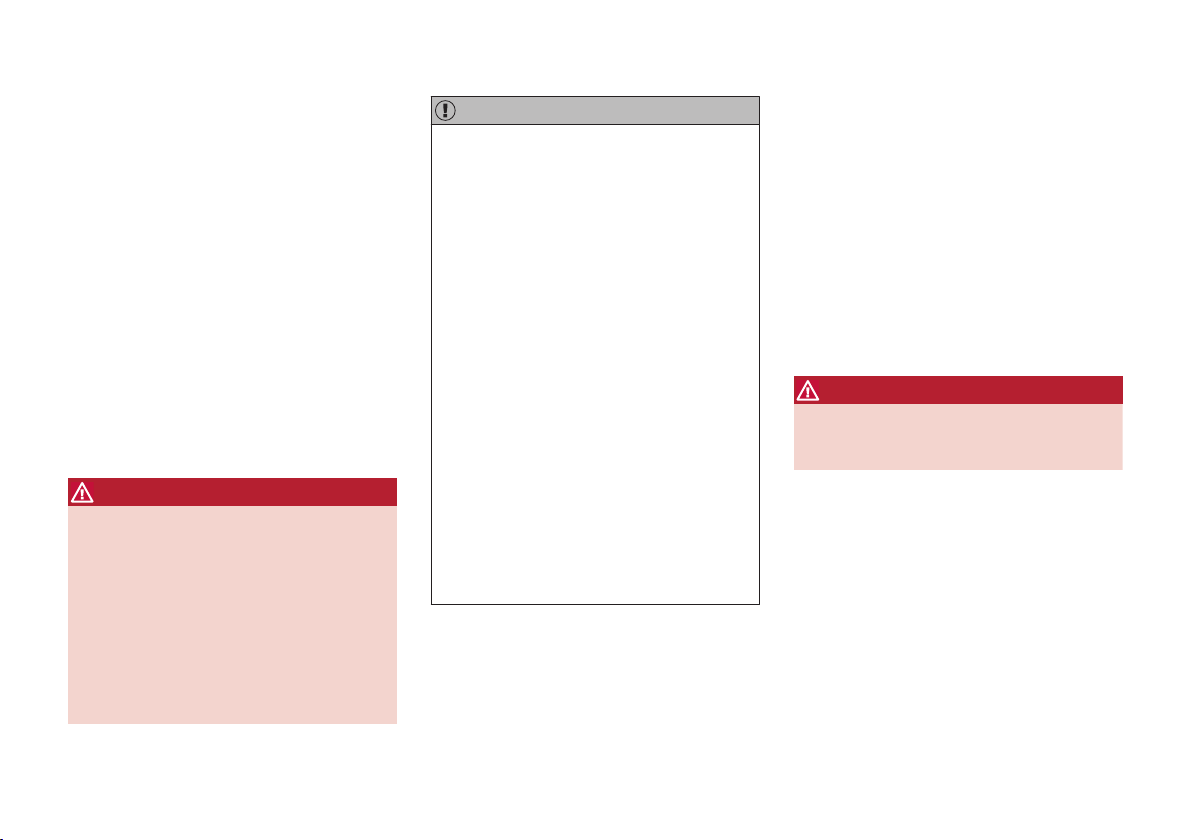Loading ...
Loading ...
Loading ...

STARTING AND DRIVING
284
Driving through water
The vehicle should be driven with extreme cau-
tion if it is necessary to drive through standing
water.
The vehicle can be driven through water up to a
depth of approximately 10 in. (25 cm), (V60
Cross Country: approximately 12 in. (30 cm)) at
walking speed to help prevent water from enter-
ing the differential and the transmission. Water
reduces the oil's lubricating capacity and may
shorten the service life of these components.
•
Take particular care when driving through
flowing water.
•
Clean the electrical connections for trailer
wiring after driving in mud or water.
•
When driving through water, maintain low
speed and do not stop in the water.
WARNING
•
Avoid driving through standing or rushing
water. Doing so can be dangerous and it
may also be difficult to determine the
actual depth of the water.
•
If water cannot be avoided, after driving
through the water, press lightly on the
brake pedal to ensure that the brakes are
functioning normally. Water or mud can
make the brake linings slippery, resulting
in delayed braking effect.
CAUTION
•
Engine damage will occur if water is
drawn into the air cleaner.
•
If the vehicle is driven through water
deeper than approximately 10 in.
(25 cm), (V60 Cross Country: approxi-
mately 12 in. (30 cm)), water may enter
the differential and the transmission. This
reduces the oil's lubricating capacity and
may shorten the service life of these
components.
•
Damage to any components, the engine,
transmission, turbo-charger, differential or
its internal components caused by flood-
ing, vapor lock or insufficient oil is not
covered under warranty.
•
Do not allow the vehicle to stand in water
up to the door sills longer than absolutely
necessary. This could result in electrical
malfunctions.
•
If the engine has been stopped while the
vehicle is in water, do not attempt to
restart it. Have the vehicle towed out of
the water.
Related information
•
Towing the vehicle (p. 295)
•
Towing by tow truck (p. 296)
Engine and cooling system
Under special conditions, for example when driv-
ing in hilly terrain, extreme heat or with heavy
loads, there is a risk that the engine and cooling
system will overheat.
Proceed as follows to avoid overheating the
engine.
•
Maintain a low speed when driving with a
trailer up long, steep hills. For information,
see Towing a trailer (p. 292)
•
Do not turn the engine off immediately when
stopping after a hard drive.
WARNING
The cooling fan may start or continue to oper-
ate (for up to 6 minutes) after the engine has
been switched off.
•
Remove any auxiliary lights from in front of
the grille when driving in hot weather condi-
tions.
•
Do not exceed engine speeds of 4500 rpm if
driving with a trailer in hilly terrain. The oil
temperature could become too high.
Loading ...
Loading ...
Loading ...